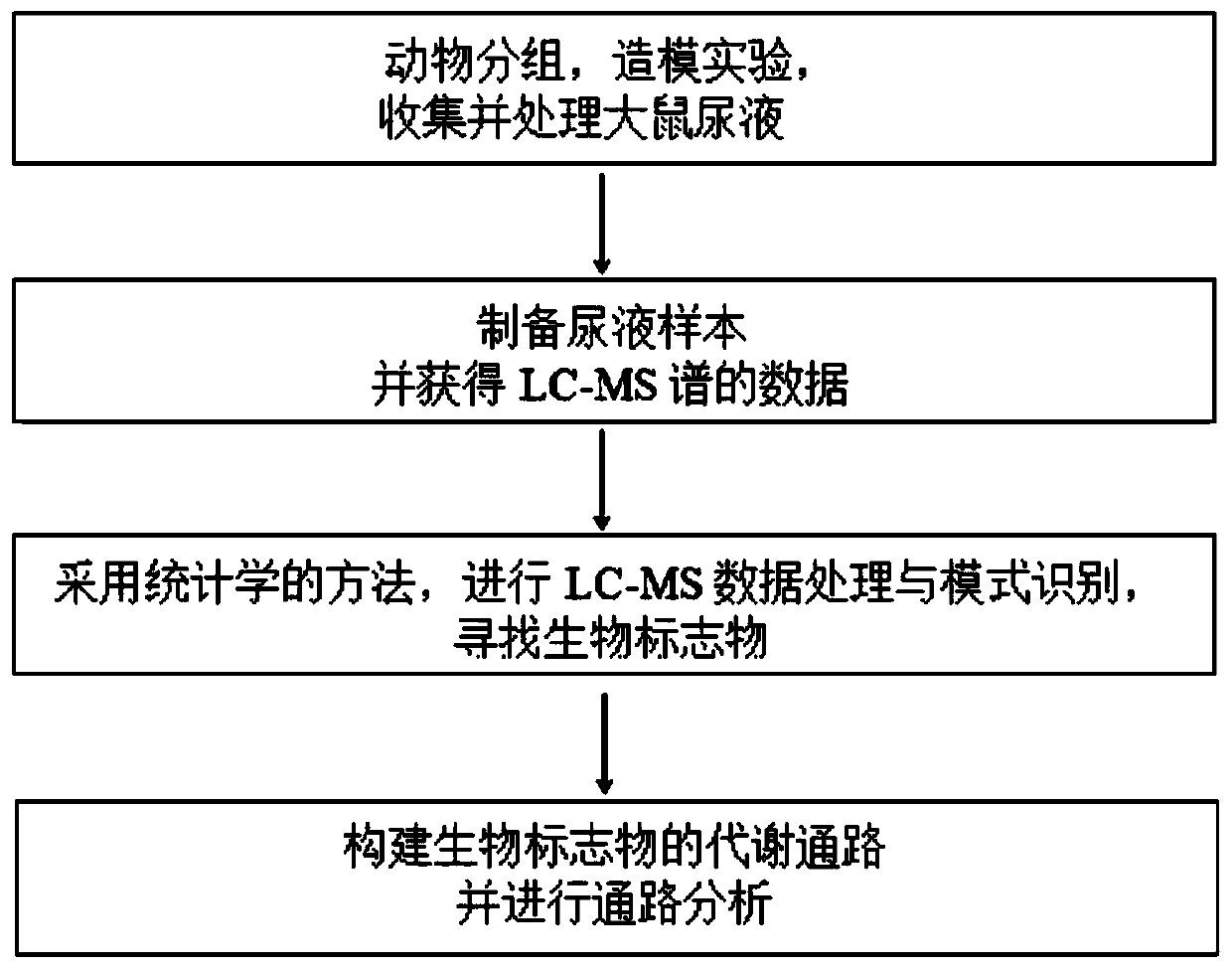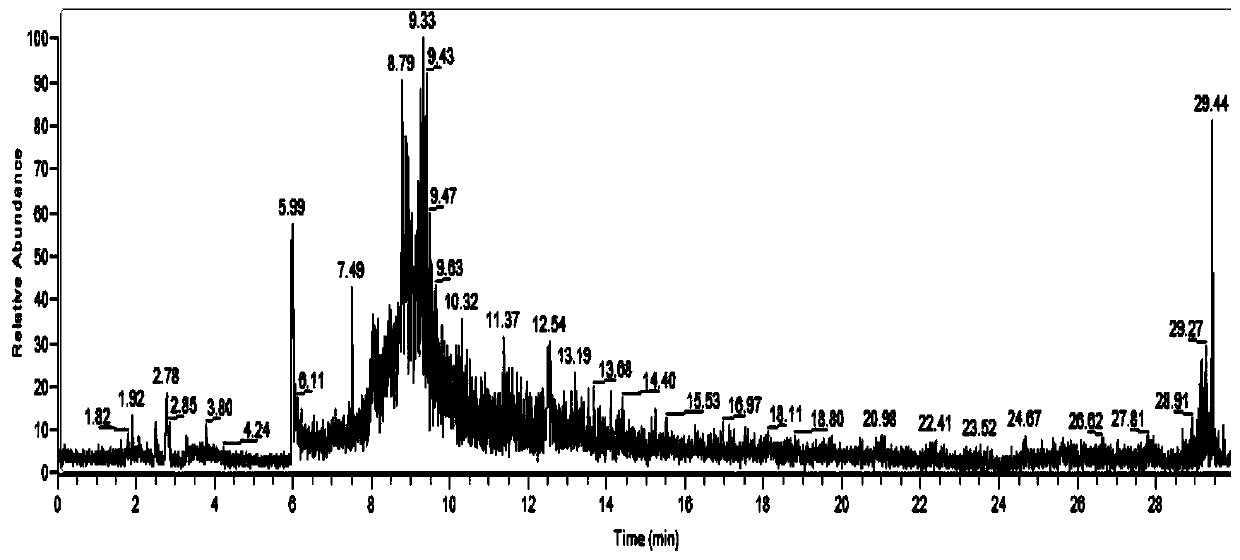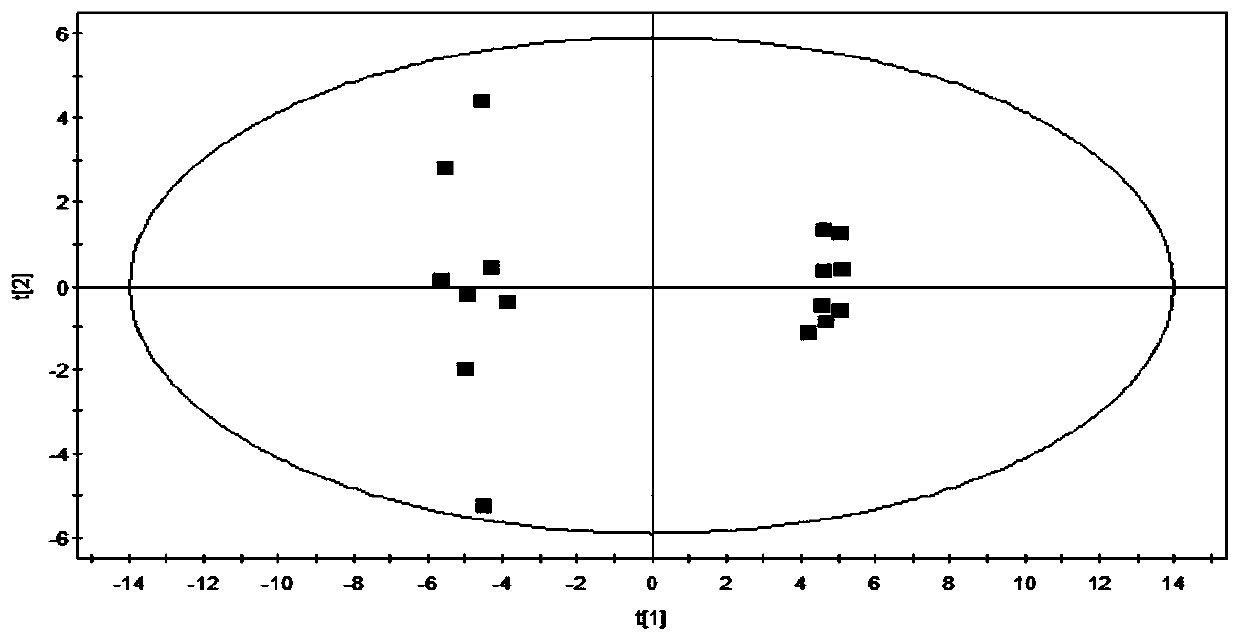A method for constructing a rat model for anti-oxidative aging drug screening based on metabolomics analysis
A rat model and aging technology, applied in the field of metabolomics analysis, can solve the problems of low accuracy, poor system, high cost, etc., and achieve the effect of strong specificity, embodying rationality and scientificity
- Summary
- Abstract
- Description
- Claims
- Application Information
AI Technical Summary
Problems solved by technology
Method used
Image
Examples
Embodiment 1
[0043] [Example 1] Divide the experimental animals into normal group (blank group), model group, positive control group, high-dose group, middle-dose group and low-dose group, inject, gavage and collect urine samples
[0044] The specific method of animal treatment and sample collection is as follows: 48 SD rats were adaptively raised in an SPF environment for one week, and were randomly divided into 6 groups, namely blank control group, model group, positive control group, high-dose group, middle-dose group, etc. Dose group and low dose group, 8 rats in each group. Model group, positive control group and ellagic acid administration group were treated with 100mg·kg -1 d -1 Dosage D-galactose solution was injected subcutaneously in the neck once, on this basis, the positive control group was given 150mg·kg by intragastric administration every day -1 vitamin E; the high, medium and low dose groups were given 150, 100, 50 mg·kg-1·d by intragastric administration respectively -...
Embodiment 2
[0045] [Example 2] Prepare urine sample and obtain LC-MS spectrum data
[0046] The specific methods for the preparation of urine samples and LC-MS data acquisition are as follows: collect the urine of 6 groups of rats with metabolic cages and store them at -70°C. When testing, take urine samples and melt them on ice. min -1 , centrifuge at 4°C for 5min, take 0.5ml of the supernatant, add 0.5ml of methanol, vortex and mix well, let stand at 4°C for 3h, and then add 0.5ml of the supernatant to 3×104r·min -1 , centrifuged for 10 min, and the supernatant was taken, filtered through a 0.22 μm microporous membrane and used for LC-MS analysis. LC-MS conditions, liquid phase conditions are PHENOMEX QC MIX870 chromatographic column (50×4.6mm, 2.6μm), injection volume 1μl, column temperature 40°C, run for 30min. Mobile phase A is acetonitrile, mobile phase B is 0.1% formic acid, and the flow rate is 2ml min -1 , the elution conditions are shown in Table 1; the mass spectrometry cond...
Embodiment 3
[0047] [Example 3] Statistical methods were used to perform LC-MS data processing and pattern recognition to find out the urinary metabolomics biomarkers for the intervention of ellagic acid on D-galactose-induced aging rats
[0048] The original mass spectrum data information obtained by LC / ESI-MSn was processed by using MarkerView1.2.1 software for peak matching, peak extraction and data export. The data obtained above were imported into SIMCIAP-12.0 software for principal component analysis. Principal component analysis (PCA) for unsupervised pattern recognition, partial least squares (PLS-DA) for supervised pattern recognition and orthogonal partial least squares discriminant analysis (OPLS-DA) were used for discriminant analysis. The differences among the sample groups of each group were compared by the score plot (Scores Plot), and the quality of the model was evaluated by parameter values such as R2X, R2Y, and Q2. The closer R2X and R2Y were to 1, the more stable the ...
PUM
 Login to View More
Login to View More Abstract
Description
Claims
Application Information
 Login to View More
Login to View More - R&D
- Intellectual Property
- Life Sciences
- Materials
- Tech Scout
- Unparalleled Data Quality
- Higher Quality Content
- 60% Fewer Hallucinations
Browse by: Latest US Patents, China's latest patents, Technical Efficacy Thesaurus, Application Domain, Technology Topic, Popular Technical Reports.
© 2025 PatSnap. All rights reserved.Legal|Privacy policy|Modern Slavery Act Transparency Statement|Sitemap|About US| Contact US: help@patsnap.com



